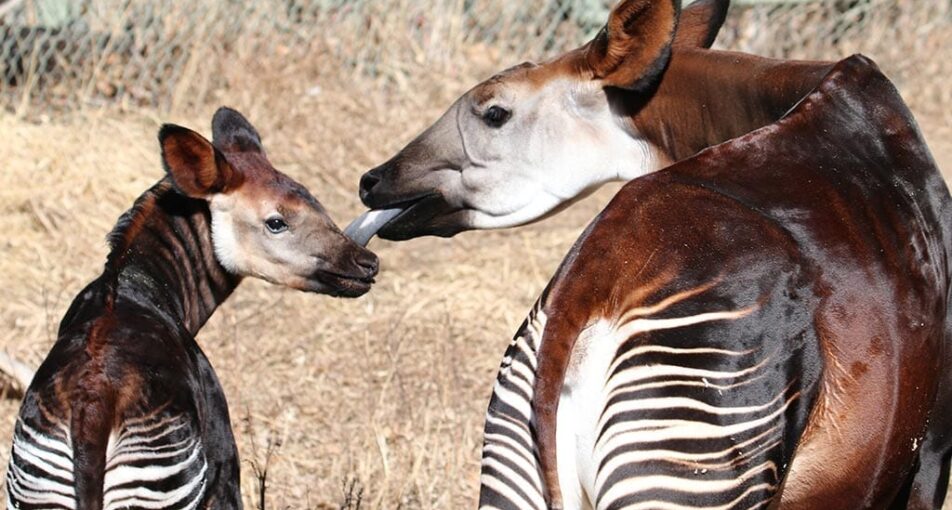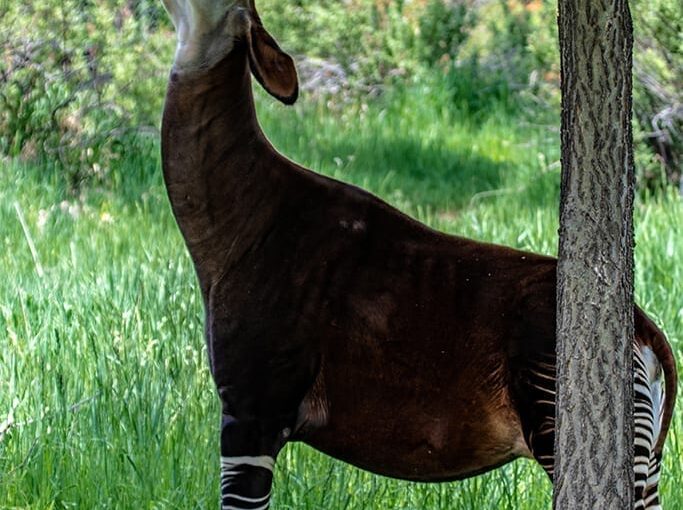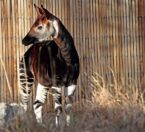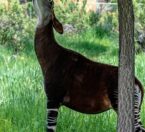The unique color pattern of the okapi allows it to disappear into the background of dense vegetation in the forests where it lives. From the front, the dark coloration is rather dull and inconspicuous. From the back, the white stripes against the brown fur help the okapi blend into the shadows of the rainforest. Their fur also helps repel rain and moisture in their rainforest habitat, due to an oily coating.
Classification
| CLASS: | Mammalia |
| ORDER: | Artiodactyla |
| FAMILY: | Giraffidae |
| GENUS: | Okapia |
| SPECIES: | johnstoni |
Habitat & Range
This species prefers dense rainforests near water.
Found only in the Ituri tropical rainforests of the Democratic Republic of Congo in central Africa, at altitudes from 1,640 to 3,280 feet (500 to 1,000 m) or higher.
Location


Adaptations
- Giraffe Cousins
- Although the okapi’s striped markings are similar to the zebra, it is actually related to the giraffe. Like giraffe, okapi have skin-covered horns and a long black or dark blue prehensile tongue. Unlike giraffe, okapi are solitary animals living in dense rainforest areas. Due to their size and their versatile tongue, both giraffe and okapi are able to reach vegetation higher up than most other hoofed animals.
- Prehensile Tongue
- The okapi’s long prehensile tongue is used to strip leaves from branches and vines. Their tongue is 12-14 inches (30-36 cm) long and black or dark blue in color. Okapi can also use their tongue to wash their eyelids, clean out their ears and swat insects from their withers (the ridge between an animal’s shoulder bones).
- Can You See Me Now?
- The unique color pattern of the okapi allows it to disappear into the background of dense vegetation in the forests where it lives. From the front, the dark coloration is rather dull and inconspicuous. From the back, the white stripes against the brown fur help the okapi blend into the shadows of the rainforest. Their fur also helps repel rain and moisture in their rainforest habitat, due to an oily coating.
Physical Description
- Okapi are about eight feet (2.4 m) long.
- They weigh 450-550 pounds (202-248 kg); females are larger than males.
- Stand six and a half feet (1.9 m) high at the shoulder.
- Okapi have dark brown velvet-like fur with horizontal white stripes on the legs and rear.
- Males have two small skin covered horns called “ossicones” on their forehead.
- They have a 12-14 inch (30-36 cm) long, flexible black or dark blue tongue.
- They have large ears.
Diet
What Does It Eat?
In the wild:
Leaves, buds, grasses, ferns, fruit and fungi. Mineral requirements are filled by ingesting sulfurous, slightly salty, reddish clay found near rivers and streams.
At the zoo:
Hay, grain, vitamin and mineral supplements and fruit treats.
What Eats It?
Okapi are preyed upon by leopards, and some humans for bushmeat.
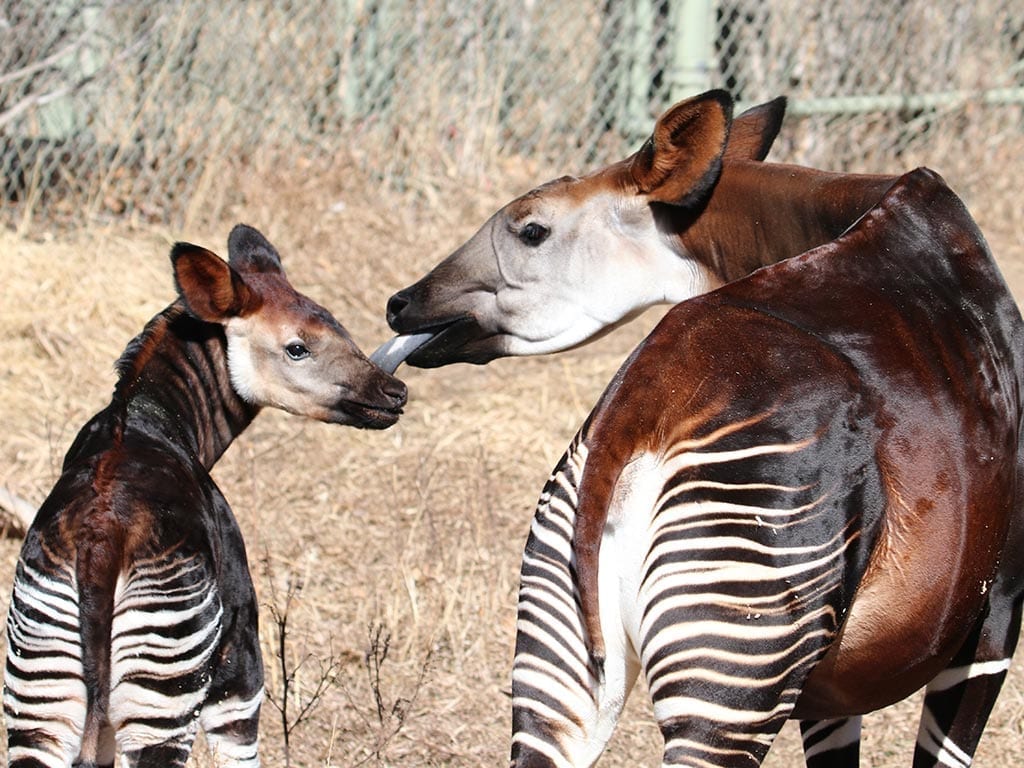
Social Organization
Okapi are solitary except for mating pairs and females with calves.
Life Cycle
Both males and females are sexually mature at three years of age. During mating time, females issue trumpet calls and leave scent traits in the forest to alert males. After mating, the male and female go their separate ways. After a gestation of 14 months okapi give birth to a single calf weighing 30-65 pounds (14-30 kg) in dense forest vegetation. The calf can stand within 30 minutes and begin nursing in 15-30 minutes. For the first two months the calf is hidden in the underbrush and nurses infrequently. Hiding and resting protects calves from predators and seems to promote rapid growth. Calves are weaned at about six months, although they may continue to suckle for a year. Males develop ossicones between one and five years. Lifespan in the wild is difficult to determine for these secretive animals but in captivity okapi can live between 15 and 20 years.


